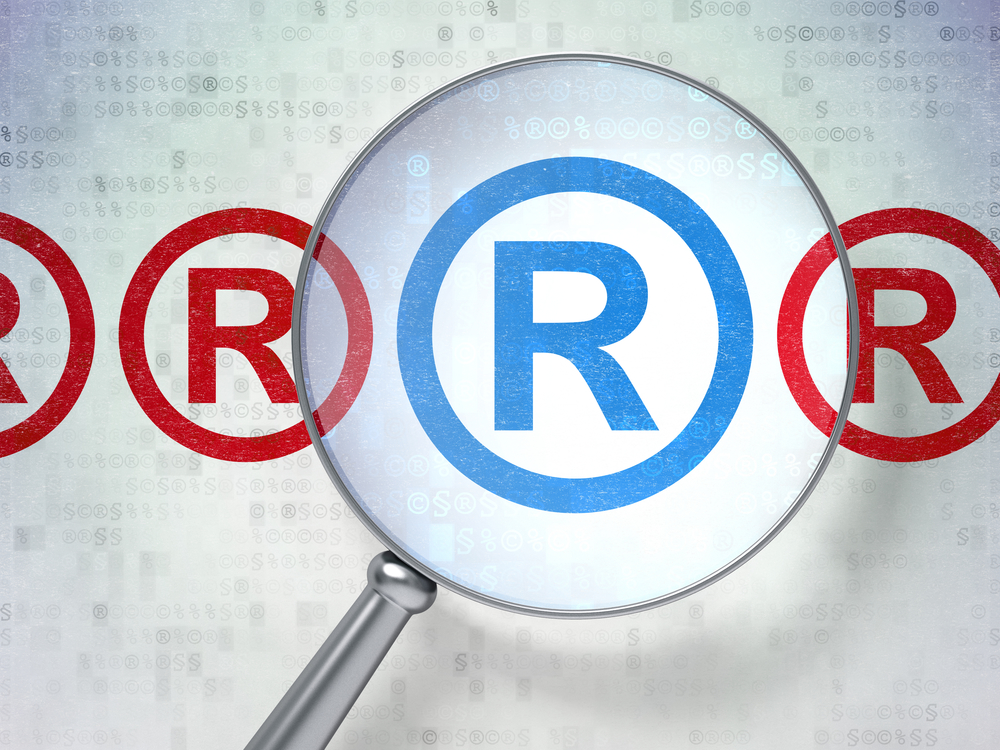Some businesses receive threatening letters or emails at some point in which the senders accuse them of trademark infringement. These accusations are often based on the use of similar logos, slogans or names. With the internet and Google, trademark infringement accusations are becoming more common. Whether or not you might have to negotiate with the sender of a cease and desist letter will depend on whether your business and the other one share the same industry, whether the two businesses share a geographical market, which business first used the mark and which business registered the mark first.
What are trademarks?
The marks that a business uses in the course of conducting its business include the business name, logo and slogan. When these marks are registered with the United States Patent and Trademark Office, they are called trademarks. Registering a trademark gives a business protection for its use in the U.S. This means that other parties are not allowed to use a business’s trademarks when they are conducting business.
Not all marks are able to be trademarked. Some marks are descriptive in nature and unable to be protected through the trademark process. When there are marks that are protectable and that are being used by two different businesses, however, the question will come down to which business’s use of the mark will prevail.
It is still possible for two different businesses to have similar names are marks. For example, Delta Faucets and Delta Airlines have obviously similar names. However, the question is determined by the potential for the confusion of consumers. If two similar marks are used in different industries that are located in different markets, confusion is unlikely. On the other hand, if two businesses that are using similar marks are operating in markets that overlap, priority will be an issue.
Does the other business share the same industry as yours?
The guiding principle of trademarks is to avoid consumer confusion. If there is little likelihood that the customers of the accusing business will be confused by your use of a similar mark, there is very little chance that there will be a trademark issue. Courts look at several factors, including whether or not consumers are likely to be confused by two businesses that operate in the same industry.
If you are using a business name that is the same as another company in your industry, caution is warranted. If you are instead using a name that is the same as another company’s name that offers completely different services or products, there is probably not a trademark issue.
Does the accusing business operate in your geographical market?
Consumers are less likely to be confused if your business and the one that is claiming that you infringed its trademark are operating in different geographical markets. For instance, traditional businesses that were located in different states that shared the same names in the past could continue to operate because they weren’t competing for the same consumers. However, the internet has complicated the analysis. If your business and the other business are both online, you may have overlapping markets. In that case, you will need to carefully analyze the other applicable factors.
If the other business is a traditional company that is based in another state and that doesn’t do very much business on the internet, you might be okay. However, you may be unable to perform similar services in the other business’s state.
Which of the two businesses used the mark first?
If your business shares the same market as the other business, you will then need to figure out whether your business or the one that is claiming trademark infringement used your business name first. If you can show that your business used the name first, you will hold senior rights to it.
Which business registered the mark first?

Before applying to register a mark, a business should ideally conduct a thorough search of its market to make certain that another business hasn’t already been using it. However, people sometimes do register marks that were already in use by other businesses. If you began using the name before the other company registered it, you will be able to continue using it. However, you will only be able to use it in the market in which you were using the mark when the other company registered the name. The other company that has registered the trademark will have priority for its use in all other markets and can stop you from using it in new locations. This means that you should register your trademarks regardless of how long you have been using them.
If the other business registered the mark prior to your first use of it, there is an issue. When a company registers a mark, other businesses are considered to have constructive notice that the mark cannot be used. If you find out that this is true, you should settle the infringement claim.
Examples
1. Neither business using the same name has a federally registered trademark.
Imagine that two businesses that operate online both launched their websites in the same month and year and are using the same or a similar name. If both of these companies offer the same types of services in the same markets, there is clear potential for customers to be confused. When neither business is able to prove that it has senior rights, the courts will modify one of the marks to minimize the confusion.
If one business is able to prove that it used the name first, there would be a clear priority for that business. it would be able to continue to use the name in its market.
2. The other business registered the mark first, but your business was the first to use it.
If you began using your business name in commerce before the other company began and registered it, you will likely be able to continue to use it in the market in which you were using it when the other company registered it. However, you will not be able to expand into new markets.
If you are able to prove that the other business knew that your company was using its name, you may be able to prove that its infringement was willful. When willful infringement is proved, the other company may have its trademark registration canceled.
3. The other company was the first to use the mark and to obtain a registered trademark for it.
If the other company began using the mark and also registered it before you company began using it, it can force you to stop using your business’s name. It might also be able to recover damages. If this is your situation, you need to get out of it as quickly as possible.
4. Both companies operate in markets that overlap and registered the name.
In rare cases, two different businesses that operate in markets that overlap will obtain a federal registration for the same or a similar mark. In order to resolve this type of situation, it will likely require either a lawsuit or an administrative proceeding with the USPTO. Because the costs of litigation can be high, it might be wiser for you to try to negotiate a settlement.
5. Before you used your mark, the other company filed an intent to use application with the USPTO.
It is a smart idea to file an intent to use application with the USPTO when you identify a name for your business that you would like to use. If you file this application and someone else begins using a similar name before your business launch, your rights will be protected.
Registering your marks is an important part of your business plan. If you fail to register a mark and later receive a cease and desist letter, you may need to get help from an experienced intellectual property attorney. A lawyer may analyze the different factors that courts consider in order to determine whether a valid issue exists. If there appears to be a problem, your lawyer may negotiate with the other business in an effort to reach a settlement. To schedule an appointment, contact us today by telephone, or fill out our contact form.











